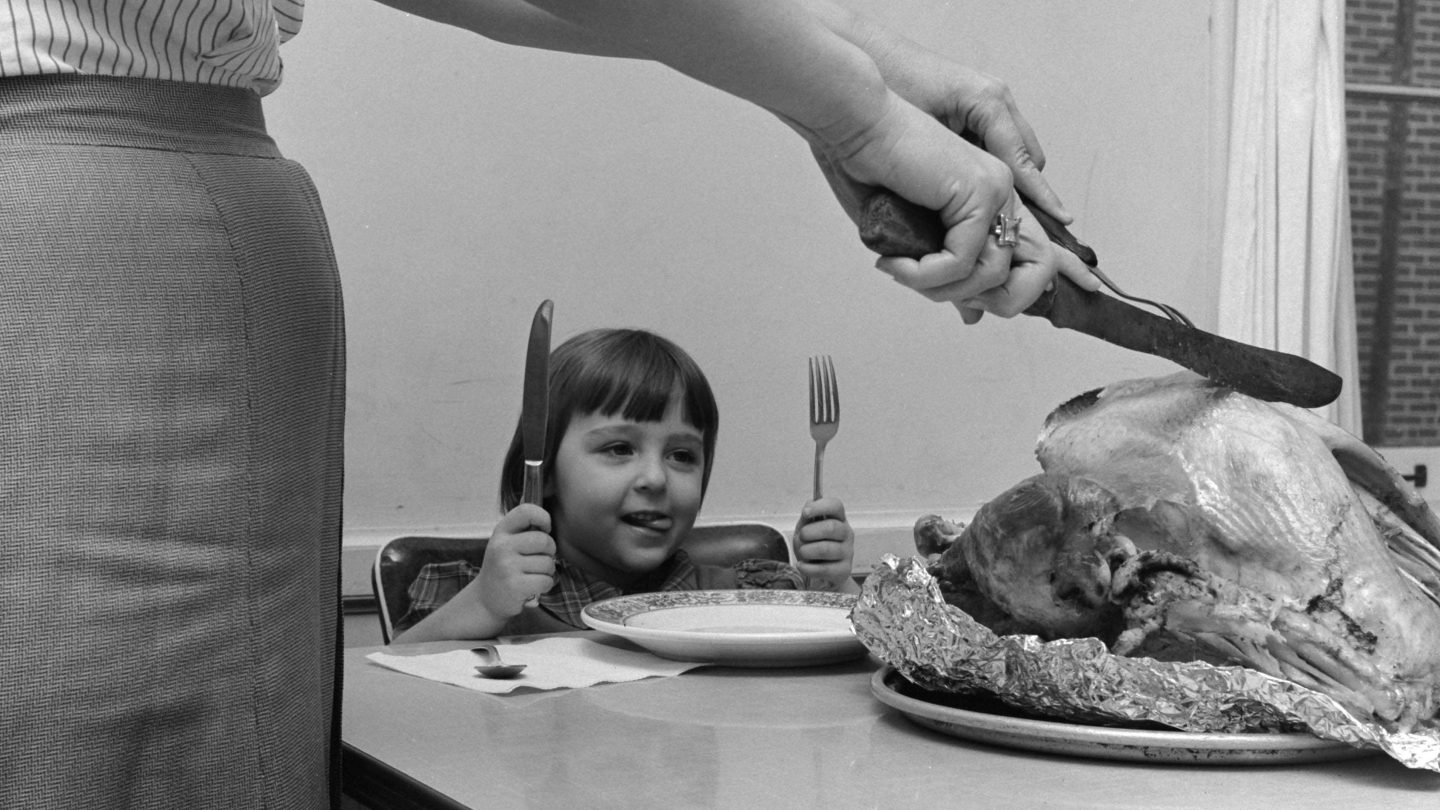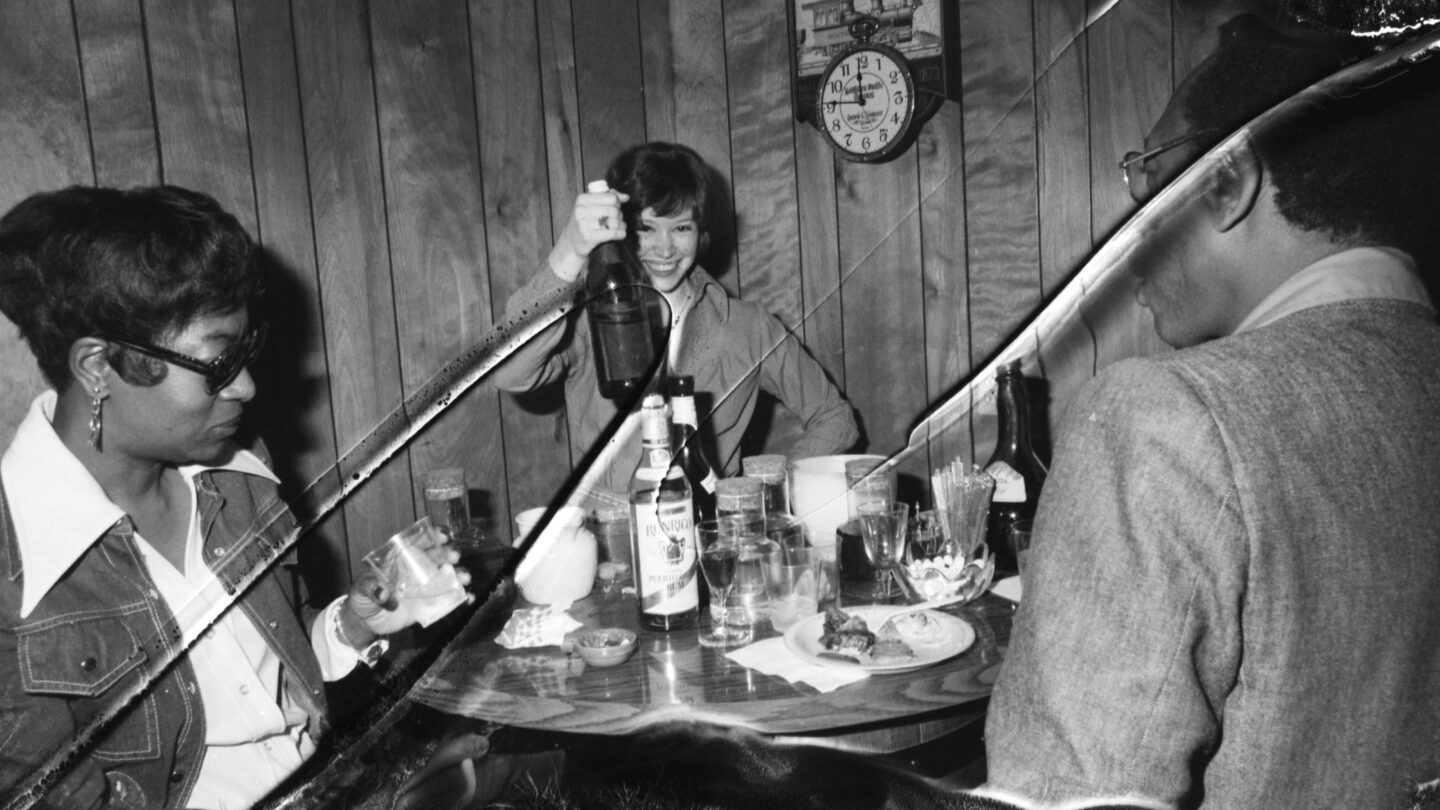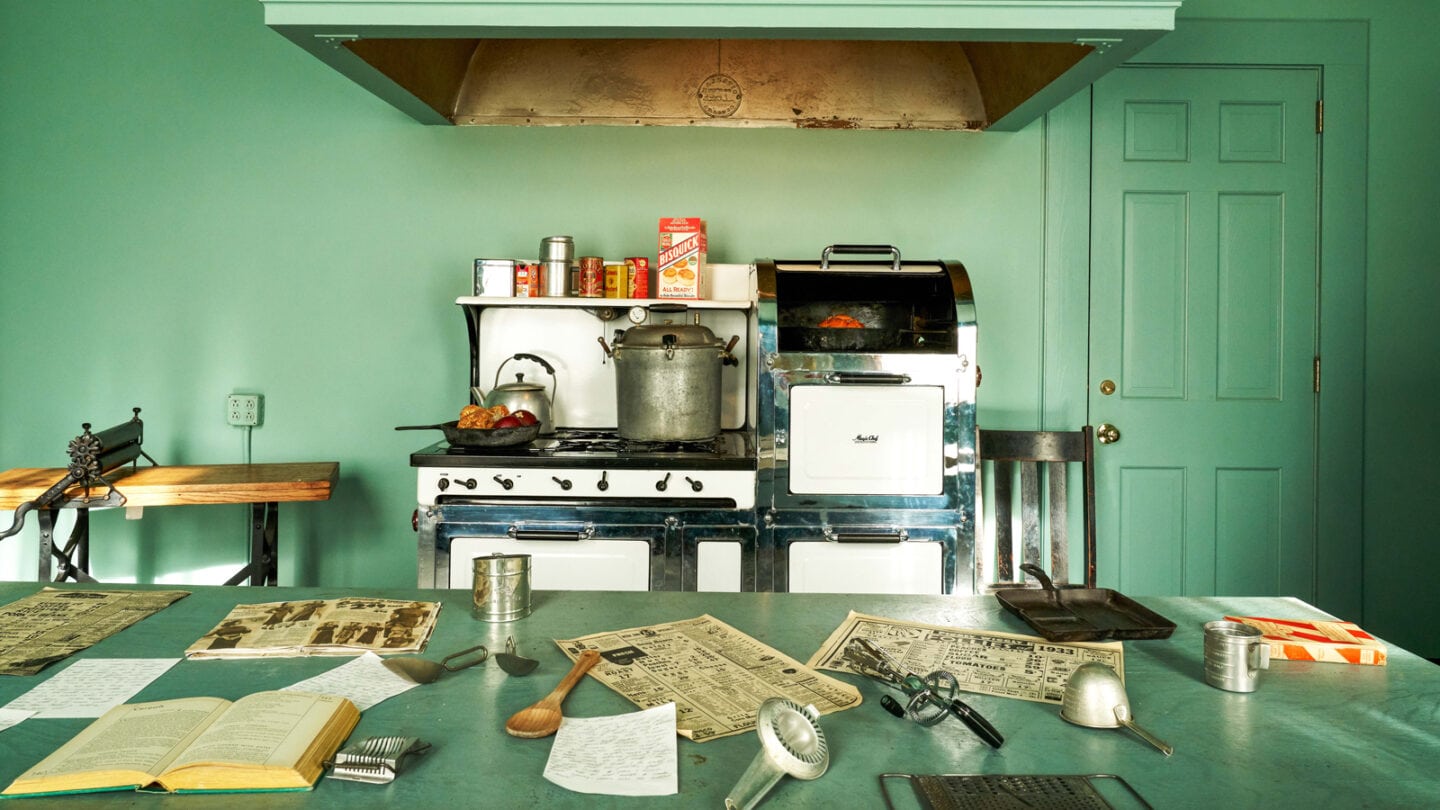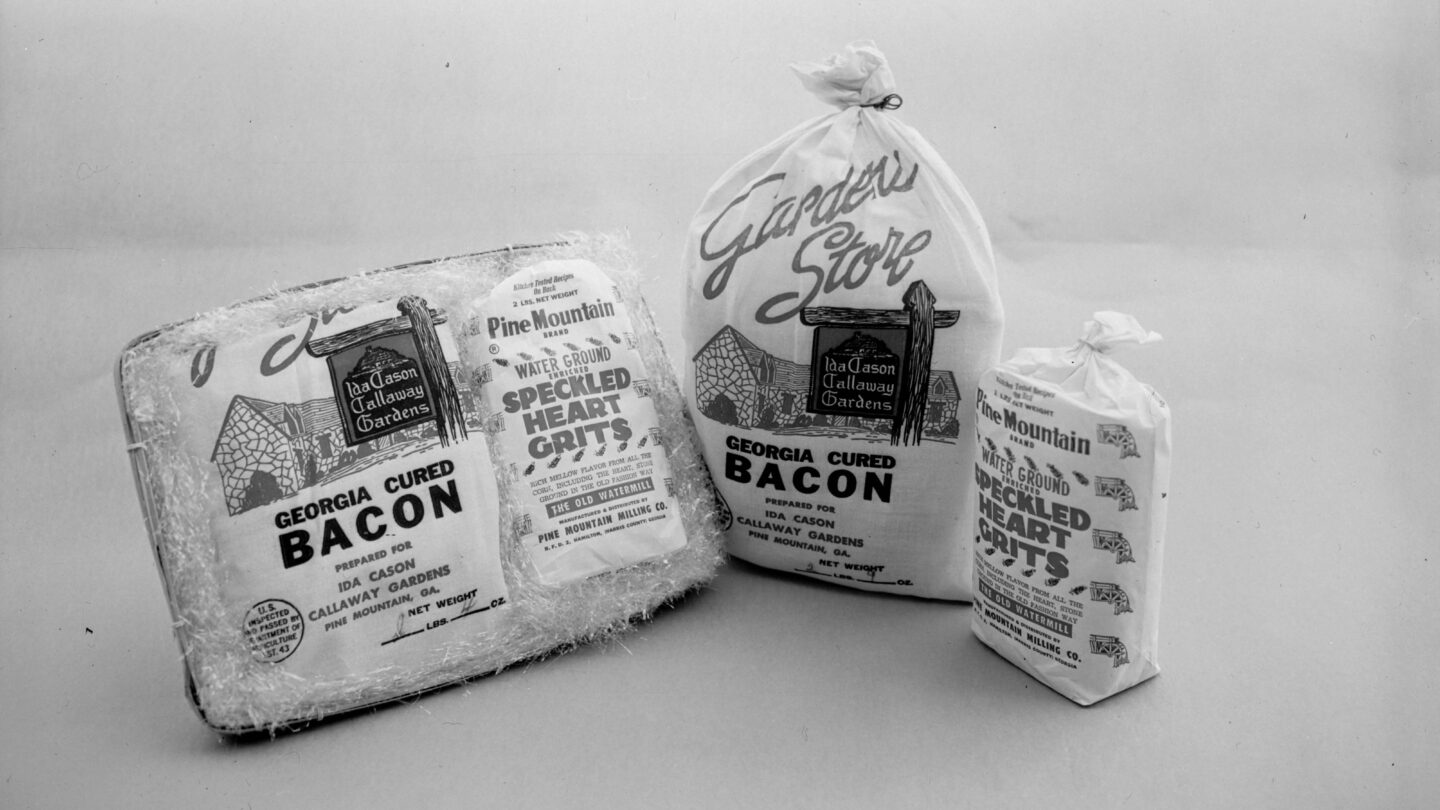
Get ready to get hungry, friends! The American South boasts an amalgamation of delicious global foodways. Spanish conquistadores pop up in pimento cheese. Jewish brisket sits alongside collards on a holiday table. Okra and rice arrived on the coasts of Savannah and Charleston from West Africa along with enslaved cooks who knew how to use them. Soul food has become a universal symbol of American cooking.
We’ve drawn up a four-course spread from across the American South’s many culinary categories. You’ll notice that these recipes look different from others—some list the ingredients, others mention “loaf sugar,” others ask you to measure liquids by the wineglass. Throughout the 19th and early-20th centuries, cookbooks weren’t written for the average home cook, rather they were intended for trained cooks who had the expertise necessary to parse directions from short recipes.
That began to change in the 1930s and 1940s when home kitchens became more user friendly and new technology emerged. Refrigerators, freezers, electric stovetops, and stand mixers revolutionized a home cook’s ability to prepare meals. The General Electric Refrigerator made it possible for housewives to cook several meals on Monday, then store and reheat them over the course of the week. To promote their refrigeration units to fledgling home cooks, General Electric published The Silent Hostess in 1932. And what keeps well in the fridge for a week? Jell-O molds.
Dinner is served.

Three cheers to the new year!
Cocktails.
Early American cocktails were often very simple and required ingredients (like milk or eggs) largely accessible in the rural South. These were thought of as “fortifying and healthful.” To start this party, we’ve included two classic holiday punches. A toast to your health!
Regent’s Punch
One pound of loaf sugar, or rock candy, one pint of strong black tea, three wineglasses of brandy, three wineglasses of Jamaica rum, one-quart bottle of champagne, the juice of two oranges, the juice of three lemons, one large lump of ice. This quantity is enough for eighteen persons.
—Submitted by Mrs. J. H. Jones, Atlanta, GA to The American Cookbook: One Thousand Selected Recipes (1901)
Milk Punch
In a mixing glass three-quarters filled with ice, pour 1 1/2 ounces of bourbon, a half ounce of dark rum, two ounces of milk or cream, a teaspoon of vanilla, and a half ounce of simple syrup. Shake vigorously until chilled, about 30 seconds. Strain into a rocks glass. Dust with nutmeg. Serves one.
—From The New York Times Southern Heritage Cookbook (1976)

Nearly half a decade of elaborate Christmas dishes came out of the Swan House kitchen.
Starters.
What kind of hosts would we be if we didn’t offer a snack with your punch? While you can always count on cheese straws to get the job done at a Southern table, we’ve elected to share something near and dear to Atlanta History Center’s heart: broccoli.
This recipe is an adaptation of Betty Crocker’s Broccoli Mold that was beloved by Emily Inman, original owner of our 1920s mansion, Swan House. Through the years, Emily was known for her extravagant Christmas parties and the broccoli mold graced the table at more than one festive fête.
Lizzie Mae Miller was one of Atlanta’s premier caterers and wealthy families often hired her for parties from the 1920s until the 1960s. Mrs. Miller was Emily’s go-to caterer and her savory broccoli mold was always a hit.
Would we recommend pairing your broccoli mold with milk punch? Not really.
Broccoli Mold
Serves 8 – Cook time, 2 hrs
Ingredients:
- 1 envelope unflavored gelatin
- 1/2 cup cold water
- 1 cup boiling water
- 2 tsp instant chicken bouillon
- 1 cup mayonnaise
- 1 tsp prepared mustard
- 1/8 teaspoon ground white pepper
- 10 oz. frozen broccoli, thawed, finely chopped
- 1/4 cup minced green onions
- Green onion curls
- Carrot curls
In a medium bowl, soften gelatin in cold water for about 1 minute. Add boiling water and bouillon, stirring until gelatin and bouillon are dissolved. Stir in lemon juice and chill to consistency of unbeaten egg whites. Fold in mayonnaise, mustard and pepper until well blended; fold in broccoli and minced green onions. Pour into a rinsed 4-cup mold and chill until firm, about 4 hours. Unmold on a chilled plate and garnish with green onion curls and carrot curls.

Many staples of Southern cuisine have more complex histories than you might think.
Mains.
Equal parts mythical and main course, Hoppin’ John is a staple of Southern cuisine. Traditionally a dish served on New Year’s Day, Hoppin’ John is said to bring good fortune to those who eat it. The first written recipe for this holiday staple appeared in an 1847 cookbook, but enslaved Africans had been making it long before then.
This dish originated in the Gullah Geechee communities along the lowcountry of South Carolina and Sea Island region of Georgia. Its ingredients were hearty and familiar to enslaved Africans across the American South. The two main components—black eyed peas and rice—both arrived on slave ships from West Africa. Their ability to be dried and stored for long periods of time made them ideal candidates for transatlantic voyages.
Enslaved Africans were given the undesirable cuts of meat seen as “leftovers.” Ingredients like pork belly, ham hocks, and maws used for chitterling made their way into the enslaved kitchen and, as a result, became mainstays in soul food.
There are as many variations of Hoppin’ John as there are families in Georgia. Some cook the rice and peas separately. Some use bacon grease and others use lard, some red peas, others black-eyed. But, as tradition would have it, if you want good fortune in the year to come, your holiday table should feature black eyed peas and collard greens.
Hopping John
One pound of bacon, one pint of red peas, one pint of rice. First put on the peas, and when half boiled, add the bacon; when the peas are well boiled, throw in the rice, which must be first washed and graveled. When the rice has been boiling half an hour, take the pot off the fire and put it on the coals to steam, as in boiling rice alone. Put a quart of water on the peas at first, and if it boils away too much add a little more hot water. Season with salt and pepper, and, if liked, a sprig of green mint. In serving up, put the rice and peas first on the dish, and the bacon on the top.
—From The Carolina Housewife (1847)
Desserts
Just when you were ready to leave the table, we’re swooping in with something sweet. In this final course, we wanted to highlight one of our favorites—kugel . Kugel can be a sweet or savory noodle casserole. Like Hoppin’ John, every family has their own version.
Atlanta has had a Jewish community since its founding. Most were immigrants from central Europe who sought new opportunities in the United States. Beginning in 1881, Atlanta’s Jewish population began to grow exponentially. Instead of entering factory work, the majority of Jewish immigrants entering Atlanta after the Civil War pursued small business enterprises like bakeries, shoe stores, clothiers, and department stores.
After the turn of the century, Atlanta’s largest dry goods store was H. Mendel & Co, owned by Russian transplant Hyman Mendel and his wife, Esther Freedman Mendel. The store became a gathering place for Atlanta’s Jewish communities to trade goods, stories, and recipes like the one below.
Aunt Babbette’s Noodle Pudding with Cranberries
For lockshen kugel: Beat up eight or ten eggs and stir wide noodles into the beaten egg. Now line a flat-bottomed iron kettle (one that is about one foot high) with nice drippings of goose fat, put in a layer of the noodles, then sprinkle with a handful of sugar, add some pounded almonds, the grated peel of one lemon and a few raisins, sprinkle some melted fat over this, then add another layer of noodles, some sugar and proceed as you did before until all are used up. Bake two hours. This makes a very large pudding, but if you choose you can make half the recipe calls. You ought to have a kugeltopf for this noodelockschen. You may make this pudding out of very finely-cut noodles, which make it still better.
For cranberry pudding: Boil a quart of cranberries till soft and add a pound of sugar; when cold beat the yelks [sic] of six eggs and one cup of sugar until thick like batter; add the grated peel of one lemon and flour crackers rolled very fine; add last the stiff beaten egg whites, then grease a pudding dish and pour in the cranberries, then the custard and bake. Eat cold with whipped cream. Very nice.
—From Aunt Babbette’s Cook Book: Foreign and Domestic Receipts for the Household (1890)
